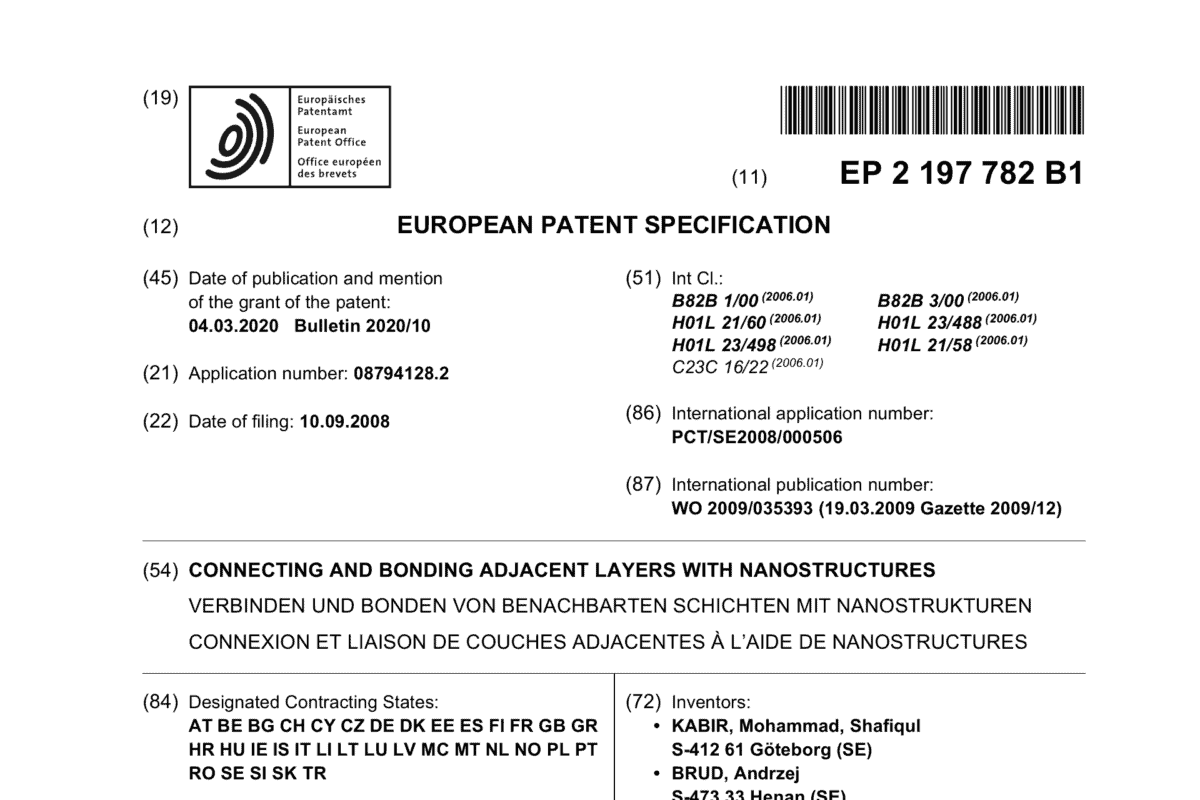Sign up for our newsletter!
Your data will be handled in compliance with our privacy policy.
Your data will be handled in compliance with our privacy policy.

The Bumping family is an apparatus connecting and bonding adjacent layers with nanostructures.
The invention: An apparatus comprising two conductive surfaces or layers and a nanostructure assembly bonded to the two conductive surfaces or layers to create electrical or thermal connections between the two conductive surfaces or layers, and a method of making same.
| Patent Office | Patent |
|---|---|
| China | CN101827782 |
| China | CN104600057 |
| Europe | EP2197782 |
| Japan | JP5535915 |
| Japan | JP6149077 |
| South Korea | KR101487346 |
| Taiwan | TWI511208 |
| Taiwan | TWI564980 |
| Taiwan | TWI655695 |
| USA | US8106517 |
| USA | US8253253 |
| USA | US8815332 |
Your data will be handled in compliance with our privacy policy.
Oops! Someone forgot to publish content. We apologize for the inconvenience.